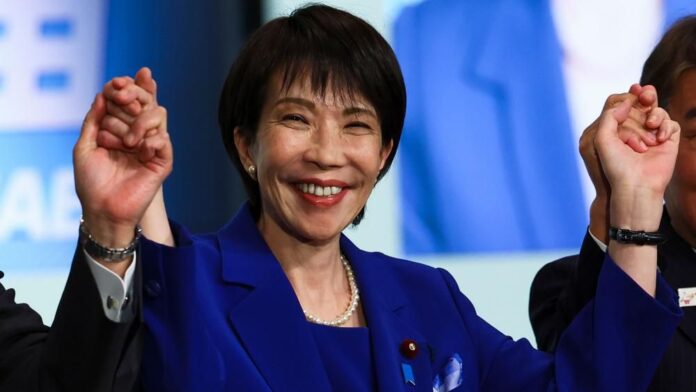A Prime Minister for Order
October 21, 2025, marks a symbolic rupture in Japan’s political history: Sanae Takaichi becomes the first woman to lead the Japanese government, a rise long dismissed by Western diplomatic circles, quick to mock her stances as overly conservative, if not reactionary. Yet, beyond the surface-level rhetoric of gender parity or modernity, her appointment signals a strategic repositioning of Japan’s right-wing on an economic nationalist course with a clear sovereignist tone.
A Fragile Victory in a Fractured Parliament
The path that led Sanae Takaichi to become the first female Prime Minister of Japan was as much about political maneuvering as it was about necessity. The ruling LDP, worn down by financial scandals and years of compromise with a spineless centrist bloc, has lost its majority in both chambers. The long-standing alliance with Komeito collapsed under the weight of growing ideological discomfort. In response, Takaichi formed a last-minute coalition with the Japan Innovation Party (Ishin), a centre-right reformist and nationalist force, securing 231 seats—two shy of an outright majority. A precarious balance, but one that reflects both her flexibility and resolve.
Unapologetic Conservatism in the Face of Decline
Her rise must be understood within the broader context of Japan’s ongoing crises: demographic implosion, economic stagnation, and waning national pride. Takaichi represents a right that no longer apologizes for existing—a right that defends Japan’s identity without ambiguity. Her political references to Margaret Thatcher and her refusal to amend the law requiring married couples to share a surname are telling: for her, societal order takes precedence over imported liberal norms.
The appointment of Satsuki Katayama, a fierce advocate for regional revitalization, as Finance Minister, and the promise of Scandinavian-level female representation in the cabinet, reflect a carefully orchestrated strategy—one that blends a rooted modernity with national coherence, far removed from Western progressive performativity.
Cautious Posture on China, Trump’s Return
Donald Trump’s return to the White House introduces a new geopolitical variable. His scheduled visit to Tokyo next week is viewed as a litmus test: will Japan remain within the American orbit or reassert its regional autonomy?
Takaichi, a political disciple of Shinzo Abe, signals strategic firmness while maintaining calibrated ambiguity. Her decision not to visit the Yasukuni Shrine, a highly symbolic gesture for Japan’s neighbors, without renouncing her ideological principles, reveals a subtle but intentional positioning: Tokyo is regaining its unpredictability.
Markets Cheer, Public Opinion Hesitates
The Tokyo Stock Exchange reacted enthusiastically to her victory, climbing to historic highs. Financial markets, ever attuned to subtle cues, are betting on a stimulus-driven recovery coupled with renewed institutional stability.
Yet popular sentiment remains cautious. The rise of Sanseito, a populist party denouncing immigration as a “silent invasion,” illustrates that a segment of the population demands more than symbols. The nation oscillates between rediscovered pride and a post-pandemic wariness.
A Prime Minister on a Mission
Japan is searching for a new direction, and Sanae Takaichi aims to provide it. While her coalition remains fragile and the international agenda uncertain, her stance contrasts sharply with her predecessors: realism, resolve, and an end to memorial guilt.
Whether Japan’s bureaucratic machinery, the old LDP networks, and foreign pressure will allow this “Iron Lady of Japan” to endure remains to be seen. Like Europe, Japan is undergoing a quiet reinvention. Takaichi might just be its most visible face.



